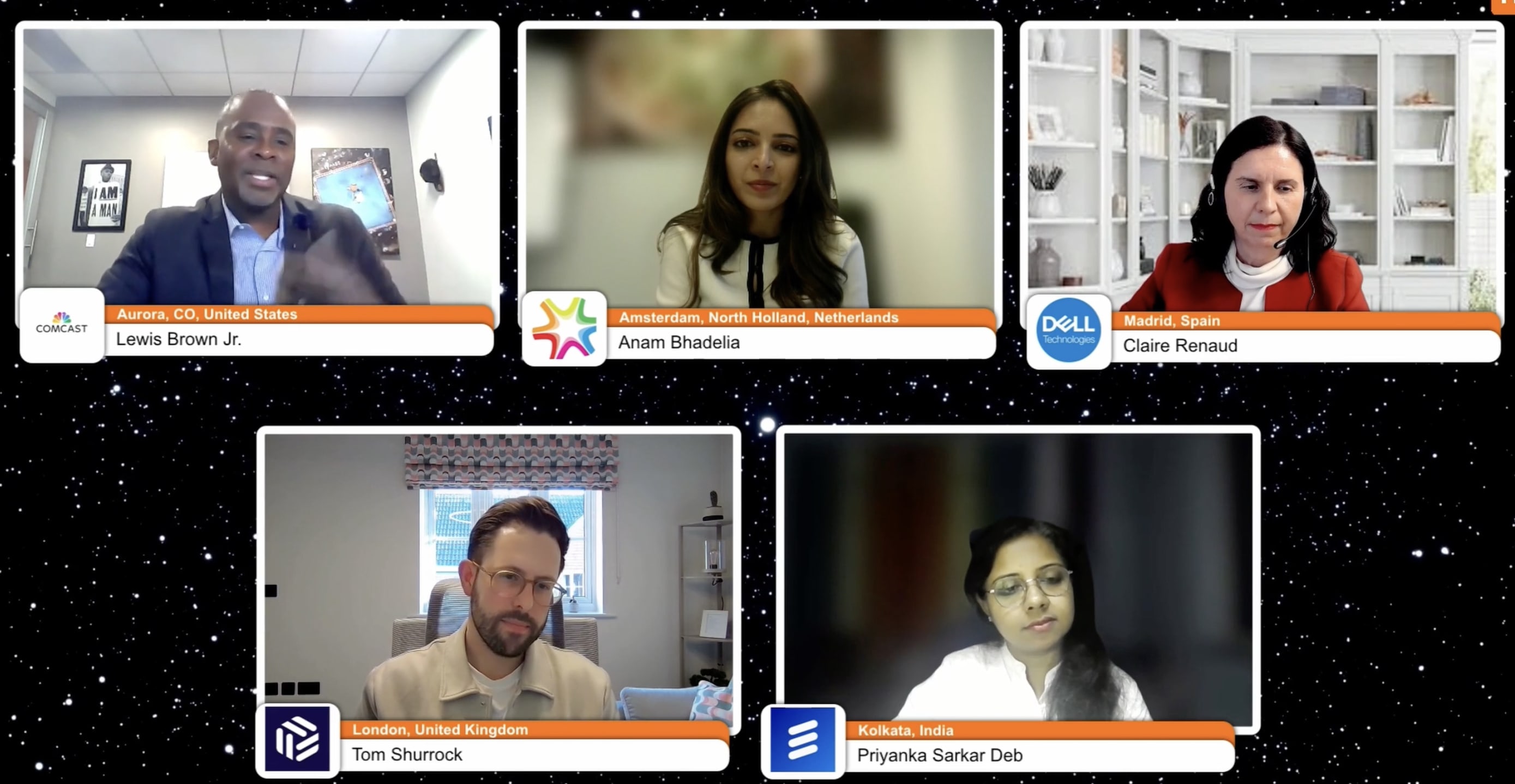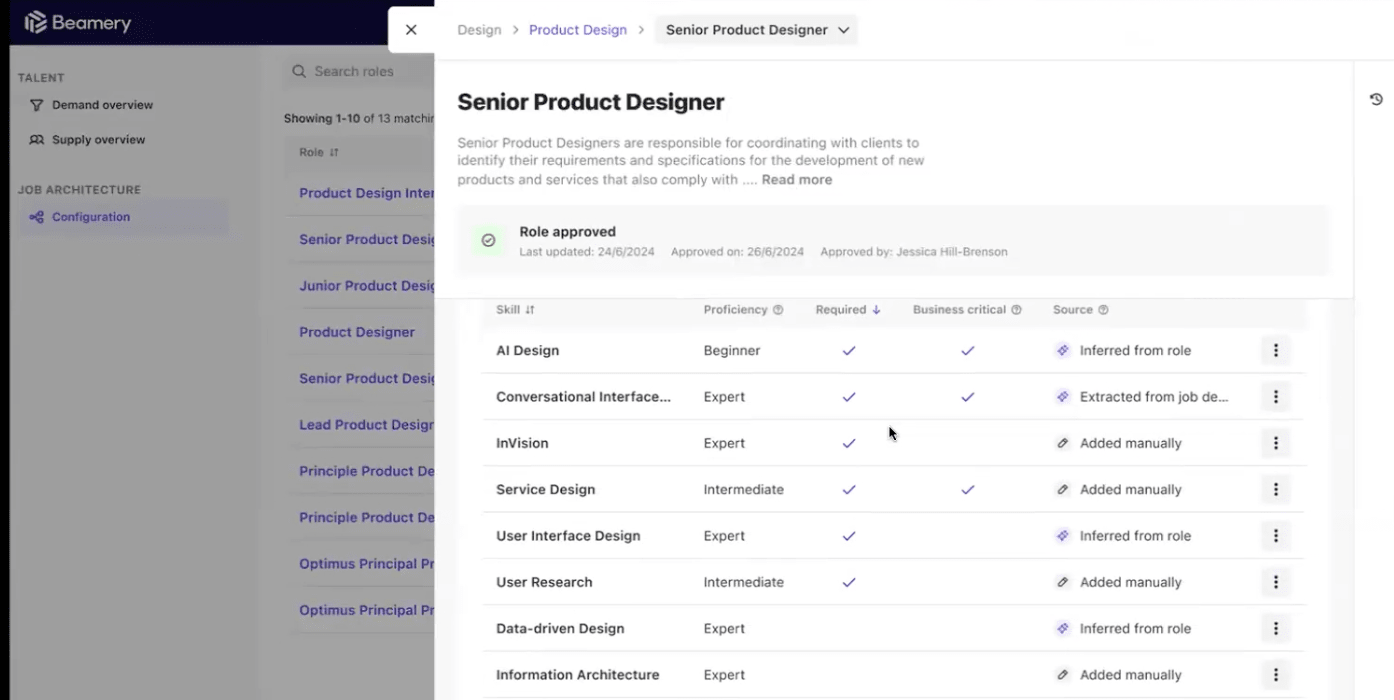How A Dynamic Skills Framework Can Futureproof Your Workforce
Your workforce is evolving – whether you’re tracking it or not. Every time a manager tweaks a job description, adds a new requirement, or assigns a stretch project, they’re signaling a shift in the skills landscape. But is HR capturing those signals?
On a recent HR Leaders webinar, Lewis Brown Jr., Vice President, Talent Management, Talent Acquisition & DEI at Comcast, puts it well: “Skills belong in an ecosystem, and they are empowering. They drive us to new and interesting places.”

But to harness that power, organizations need visibility. They need to understand what skills they have today, what’s changing, and what’s needed for the future.
Instead of waiting for annual assessments or outdated surveys, leading companies are:
- Tapping into internal signals, like how roles are evolving organically.
- Tracking external shifts, such as emerging technologies reshaping required skill sets.
- Building AI-powered skills intelligence, ensuring workforce data stays fresh and actionable.
On the same HR Leaders webinar, Claire Renaud, Global HR Director at Dell Technologies, pointed out a pressing challenge: without a common skills language, even managers within the same company might define skills differently. This inconsistency can lead to miscommunication, inefficient hiring processes, and mismatched expectations between employees and leadership.
A robust skills taxonomy – one that includes proficiencies, job titles, and levels of seniority – provides the necessary foundation. From there, organizations can track change signals and align talent strategies accordingly.

The Importance Of Alignment 🧭
For a skills-first approach to succeed, it must be embedded in key HR and business processes. Priyanka Sarkar Deb, Head of Learning and Development, Cloud Support & Services at Ericsson, emphasized the importance of aligning HR leaders and learning consultants with business requirements – and of aligning skills with the whole employee lifecycle.
Anam Bhadelia, Global Director Talent at FrieslandCampina, underscored the win-win nature of skills-based talent strategies, as they are applied more broadly in an organization:
- For employees: Increased employability, career mobility, and dynamic career paths.
- For organizations: More effective succession planning, talent management, and workforce agility.
Organizations must integrate skills into everyday workflows, from hiring, rewards and incentives to succession planning.
Shifting From Jobs To Skills: The Bridge Between Planning & Execution 🌉
Business leaders are generally comfortable talking about tasks and projects, but the challenge is linking those back to skills. It’s saying: we need to launch a new product, which requires these tasks to be completed … but what are the skills underlying that? And then: who can do the work?
By shifting focus from traditional job roles to the skills required to get work done, companies can bridge the gap between workforce planning and execution, making talent deployment more effective and strategic.
A unified framework doesn’t just improve hiring; it transforms everything from workforce planning to succession strategies.
AI’s Role In The Skills Revolution 🚀
Historically, companies relied on employees to manually update their skills profiles – often, of course, an uphill battle. Profiles would be incomplete, self-assessed and not particularly useful. But AI is flipping that model on its head.
Instead of asking people to fill out endless forms, AI-powered platforms look at multiple data sources to collate and infer skills by using employees’ career history, job roles, LinkedIn, and learning data, accelerating the process.
This takes away the initial barrier to building a skills framework. In fact AI introduces a flywheel effect:
- Start with a small amount of data (from hiring, career history, or external profiles like LinkedIn).
- Generate relevant recommendations based on that data.
- As employees engage, more data is captured, refining and improving future recommendations.
By applying AI to build and update skills profiles dynamically, organizations can make skills intelligence actionable, creating a two-sided marketplace of talent and opportunities.
You don’t need perfect data to start, as Tom Shurrock, VP of Product at Beamery, noted in the webinar discussion. “Get to 70%, show value, and the flywheel starts turning.”
The Big Challenge: Change Is Constant 🎡
The biggest hurdle? Keeping up. Claire highlighted that companies can’t rely on one-off learning programs to futureproof their workforce. Employees need enthusiasm for upskilling within a continuous learning culture – one where people feel safe experimenting, gaining new experiences, and pivoting when needed.
That’s why leaders should be focusing on:
- On-the-job learning opportunities
- Flexible career pathways (both vertical and lateral moves)
- Microcredentialing for in-demand skills.
As skills intelligence becomes infused into decision making, so learning becomes infused into work.
Measuring Impact: Define Success For Your Organization 📈
A skills-based workforce looks different for every organization. That’s why defining impact is crucial.
- If hiring speed is the issue, metrics like time to hire or time to offer are relevant.
- If the challenge is employee engagement or retention, a different set of KPIs – like internal mobility rates – may be more meaningful.
Transformation can feel overwhelming, but webinar participants agreed that the key is starting small and proving value in a specific area (whether that’s hiring, learning, or workforce planning) before scaling up. Prove value, then expand.
As Lewis put it: “Dance where the music is playing.” To ensure a skills-based approach is adopted more widely, find the places where it’s going to make the biggest impact, fastest.
And as Tom put it: “You get attention by showing impact.”
The shift to a skills-based workforce isn’t a one-time initiative: it’s an ongoing journey. It requires cultural shifts, new ways of thinking about talent, and the right technology to enable change. Organizations that start small, capture impact, and build momentum will be best positioned to navigate the future of work.
Are you ready to put skills at the heart of your workforce strategy?
Get a sample skills framework for your organization, with our free skills consultation.